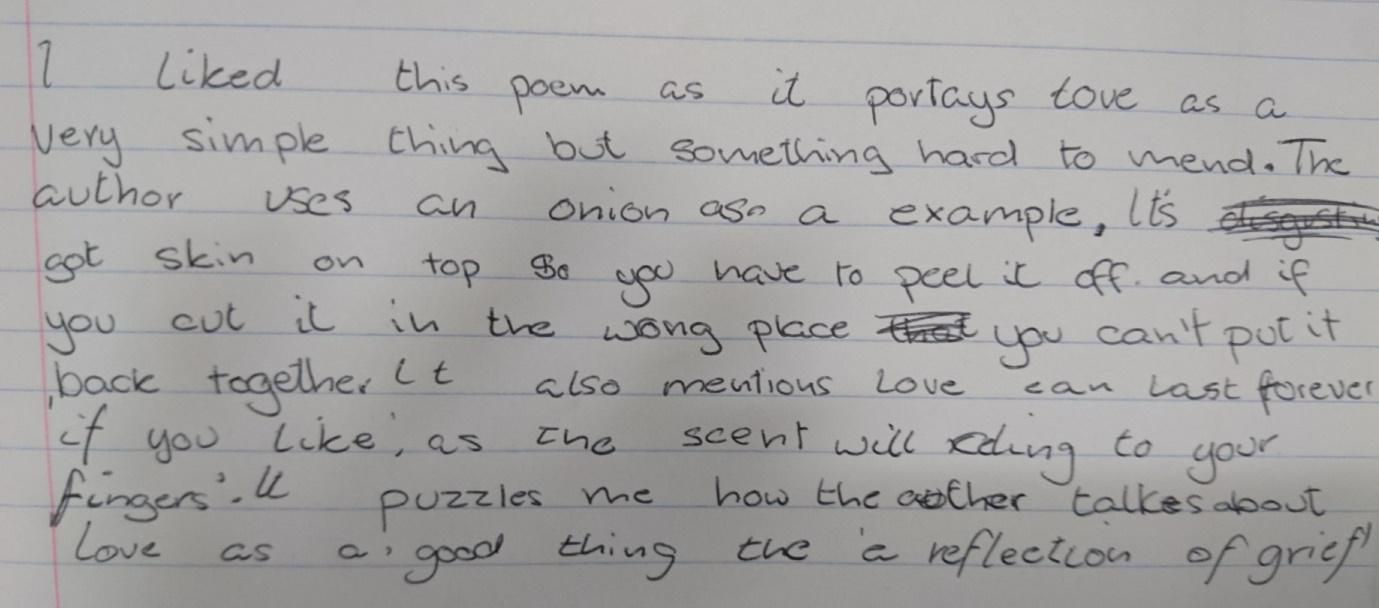How I Teach My Students to Think for Themselves, Rather Than Spoon-Feed them my Interpretation of a Text – #JustLetMeTeach

Leanne Welsh explains the ways she lets her English students form their own opinions and interpretations on literature, instead of teaching the 'correct' answer come test time

- by Leanne Welsh

To support our new #JustLetMeTeach campaign, we have free primary and secondary teacher packs to download with practical advice to help you reduce your workload, refresh your teaching, and reignite a love of learning for you and your students.
I would challenge you to find me a teacher who joined the profession to get pupils through high-stakes testing and exams.
Teachers will share their passion for pupils’ learning and their desire to make a difference, but they will not erupt with enthusiasm at the thought of a revision guide.
We live in a society where the pressure for young people to do well in examinations is immense, and teachers also carry a heavy weight to ensure pupils reach their targets and pass tests in order to meet, or surpass, the school’s standards.
This relentless strain can lead many teachers to doing what they feel is best in order to get pupils through an exam; resulting in compromised learning strategies.
Rather than developing their own interpretations, pupils are often given worksheets to memorise so that they state the ‘right’ answer in the exam – does teaching really need to be this way?
As an English teacher in Scotland, I am often trying out new approaches in order to support the pupils in my classes with their learning.
I don’t want teaching and learning to be a bland experience that will get pupils a pass and not much else. I want them to think for themselves and challenge my own opinions and views: that’s what makes learning interesting.
I ensure that I emphasise to pupils, at the start of every calendar year, that their views matter to me and I’m interested in them.
Teachers set the tone for their classes from the very first lesson. If this first lesson is copying out the course outline, with 50 references to the exam in 11 months, the atmosphere has already been established: this is a class where pupils memorise and panic.
Although we must keep the exam in our minds; I believe we can do this while allowing pupils to enjoy and respond to the literature they are reading.
After attending a conference last year I have been putting a number of learning strategies into practice. One of these is asking pupils to respond to statements rather than questions.
Make a statement
 We can often create an unconscious bias through questioning, as our questions require pupils to respond to what we are thinking in our heads. When we ask questions we are doing so through our own interpretations; statements, however, allow pupils to think from their own point of view.
We can often create an unconscious bias through questioning, as our questions require pupils to respond to what we are thinking in our heads. When we ask questions we are doing so through our own interpretations; statements, however, allow pupils to think from their own point of view.
Pupils can either agree or disagree with a statement, and must give evidence in order to back up their view.
I always encourage pupils to do this individually first and then share with their groups: it is interesting to see how pupils’ individual experiences influence their responses and the differences between group members.
Experiences shape the way we view the world and, therefore, the way we respond to texts. For me, it is imperative that pupils have the opportunity to explore their own interpretations.
Pupils can then share these interpretations with the class and compare their responses.
Statements support pupils to have the confidence to respond to any text: not just those in an exam paper.
Statements also create opportunities for pupils to build their speaking and debating skills. We, and other pupils, can take on the role of Devil’s advocate and encourage pupils to justify their interpretation of a text.
By challenging each other’s views pupils develop essential talking and listening skills and these skills will help them throughout their life; not just for the exam they sit in May.
Reader-response theory
 As well as statements, I also use Reader-Response Theory in my lessons. This involves pupils thinking about their own views of a text, allowing them to explore what they like and dislike about a text, as well as what they find puzzling.
As well as statements, I also use Reader-Response Theory in my lessons. This involves pupils thinking about their own views of a text, allowing them to explore what they like and dislike about a text, as well as what they find puzzling.
Pupils will also make connections with their own life and their experiences so far: does the text make them think of anything or remind them of something they have read before? This theory, in practice, allows pupils to form and have their own opinion.
It is important to remember everyone has something to contribute: we can learn a lot from pupils’ views.
A danger with ‘teaching to the test’ is we can miss a pupil’s interesting point of view because they are too scared to contribute in case they are wrong; however there is no ‘wrong’ with Reader-Response Theory.
It permits pupils to have the confidence to share what they like and dislike about a text and justify why they feel this way.
Using apps

During one of my lessons I asked pupils to choose a scene from Romeo and Juliet in their groups. I told them not to share their scene with the other groups so we could try to work them out by watching the videos at the end.
The pupils were given props, in the shape of plasticine and sweets, and used these to recreate their chosen moments.
They had to include symbolism in the scene, and had to explain the purpose of this to the rest of the class when we watched the videos back.
It was great to see the pupils engage with this task and work together. They had to think about the running sequence of the scene and re-create this clearly so that the rest of the class could work out which scene they had chosen.
The ‘Stop Motion’ app allows pupils to think and work together rather than just copy notes down from the board. It was also beneficial for me to observe the pupils’ knowledge of their chosen key scene and also ensure that they fully understood what symbolism was and why it would be used.
I would definitely use this again and would recommend it to other teachers.
There are many ways for us to engage the learners in our classrooms through the strategies we choose to use. Some may argue the ‘just tell them’ approach is best; however, for my pupils, I know allowing them to think for themselves helps me and them.
Yes there are elements of a course that pupils need to know but there are also many opportunities for pupils to explore their own views.
What I remember from my own experience at school is not the details from my copious amounts of notes copied from the board; but the tasks that challenged my thinking.
I believe it is vital we do not forget the importance of education simply because of looming tests. We must ensure pupils leave our classes with an enriched experience of learning and one that will stay with them after the high-pressure exams.
Pupils often feel learning changes once they reach their senior years due to the focus on testing; we should challenge this view and remember why we were inspired to become teachers in the first place.
Leanne Welsh is an English teacher in Scotland and a representative for The Scottish Association for the Teaching of English. You can find her blog at nqtreflections.wordpress.com and follow her on Twitter at @lcatherine91.
We’re sharing this article as part of our #JustLetMeTeach campaign, in which we’re inviting teachers to share the moments when they’ve been able to pass on what excites them about their subject, and what has excited their pupils too – whether or not it helps children pass a test.

Get involved by using the #JustLetMeTeach hashtag on social media, or get in touch with us on our Twitter and Facebook pages.











